This is the best homemade gluten-free vegan bread recipe which is egg-free, dairy-free, yeast-free, and nutritious! This German bread is actually healthy since it contains psyllium husk powder. It’s crispy on the outside and soft on the inside!
Homemade Gluten-Free Vegan Bread
I cannot tell you how many times I tried making the perfect gluten-free vegan bread… Actually, I lost count how many times I ended up throwing the towel because it’s damn hard to create good gluten-free bread without eggs.
But since I can be quite stubborn (haha) I actually never gave up and continued with the recipe testing…
Psyllium Husk Powder
One day, I started experimenting with gluten-free pizza crust that contains psyllium husk powder. The recipe turned out so good, that I got intrigued.
To make a long story short, I made an online search about homemade gluten-free vegan bread + psyllium husk and found a couple of different recipes that were using huge amounts of psyllium husk powder in their bread recipes.
One recipe was from a German blogger, and she inspired me to give psyllium husk a try. I tweaked her recipe and used a different flour blend and the bread turned out amazing!
I was shocked by how great it turned out, especially since the bread is wheat-free (and therefore gluten-free), and egg-free (vegan)! It did rise, even though it doesn’t contain yeast and it actually looked like German bread from a bakery.
Conclusion: Psyllium husk powder is a godsend for gluten-free vegan baked goods. It’s also very healthy, especially for our gut! So please do yourself and favor and buy it or order it online. It’s cheap and absolutely amazing!
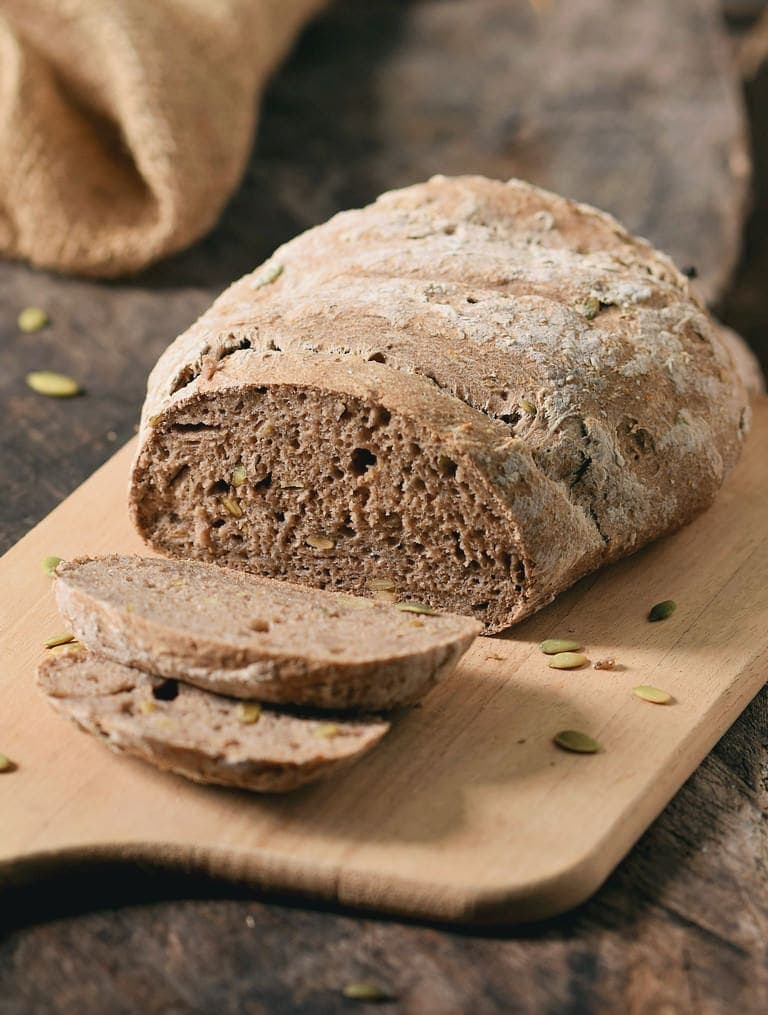
How To Make Gluten-Free Bread?
Check the video in the post to see how I made this amazing bread.
Step 1: Make the psyllium husk gel first. Mix the psyllium husk powder and water in a bowl. Try to be quick, because it gels instantly, within SECONDS. I always use a whisk, it works the best. Set aside and measure the dry bread ingredients in the meantime!
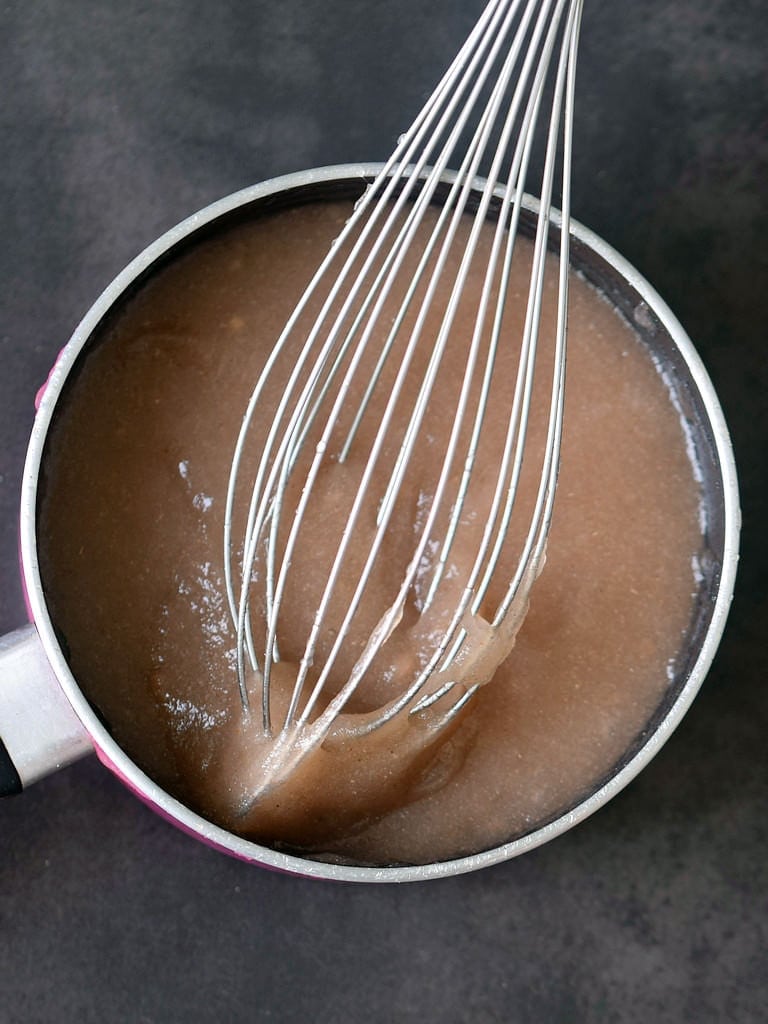
Step 2: It’s time to measure/weigh all dry ingredients and add them to a big bowl. You can also preheat your oven to 390 °F (ca. 200 °C) now.

Step 3: Mix it all together: Add the psyllium gel to the big bowl and mix all ingredients with a hand mixer (use the dough hooks). You can also knead the dough with your hands or use a Kitchen Aid. It will take about 5-10 minutes until the dough comes together.
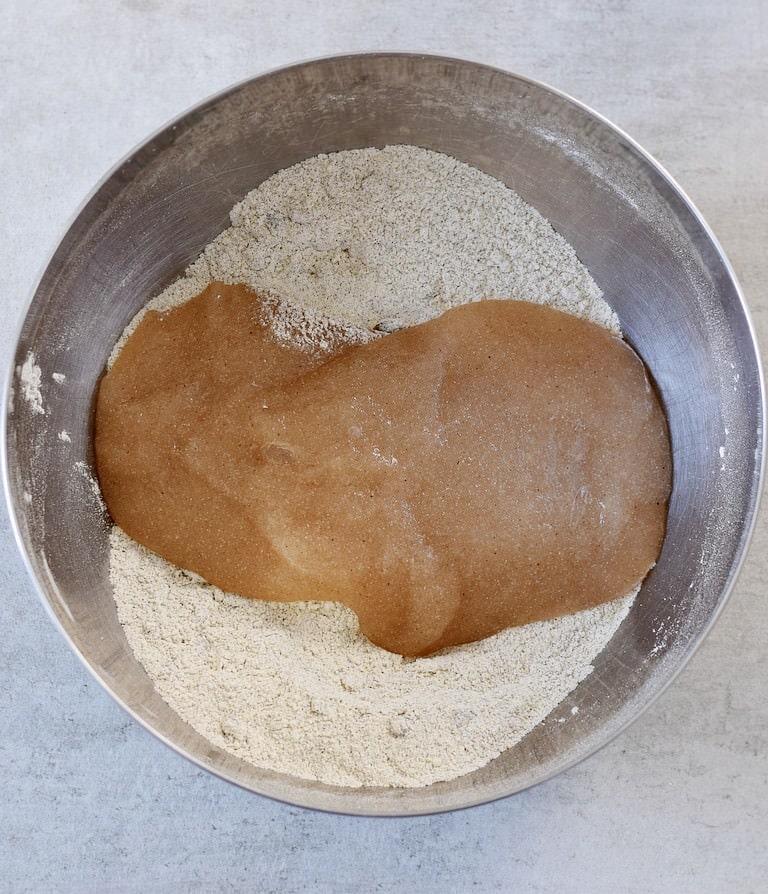
Step 4: Shape the dough and bake the bread in the oven for about 55-60 minutes. That’s it!
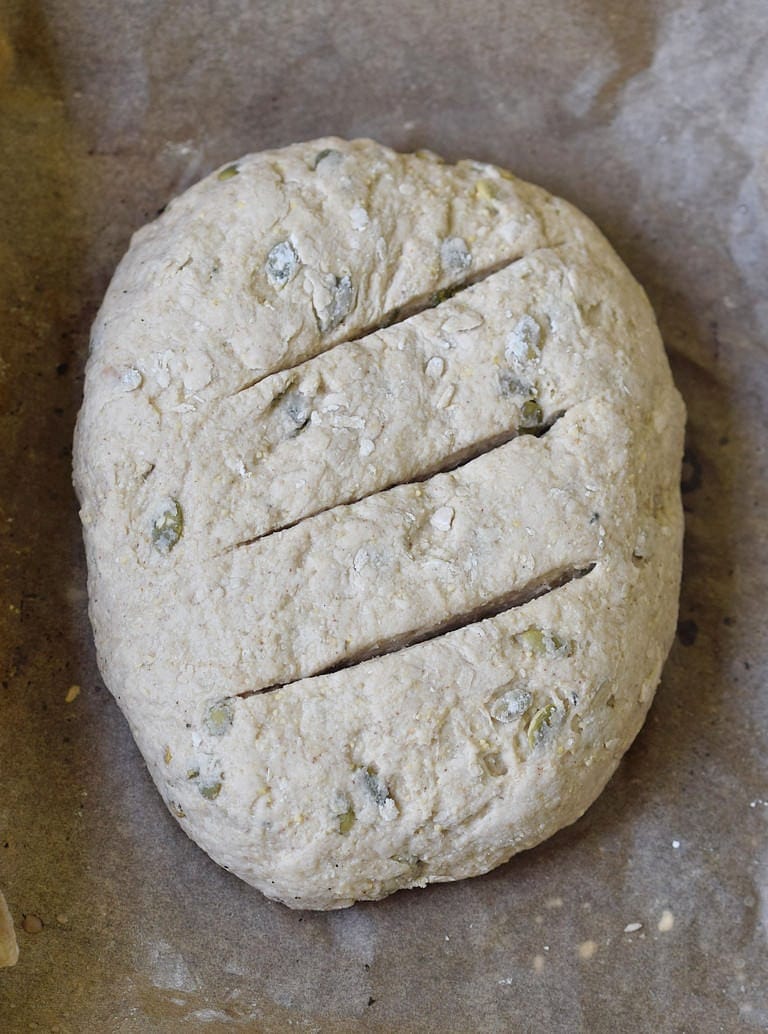
Add Seeds Of Choice
I love adding pumpkin seeds but you can also use sunflower seeds, sesame seeds or nuts of choice (e.g. hazelnuts, walnuts, cashews, almonds, etc).
The Ingredients
You can find all the ingredients with measurements below in the recipe card! Please also check the recipe notes below where I list different substitutes.
My favorite flour combo is this:
- Buckwheat flour
- Rice Flour
- Chickpea Flour
- Tapioca Flour
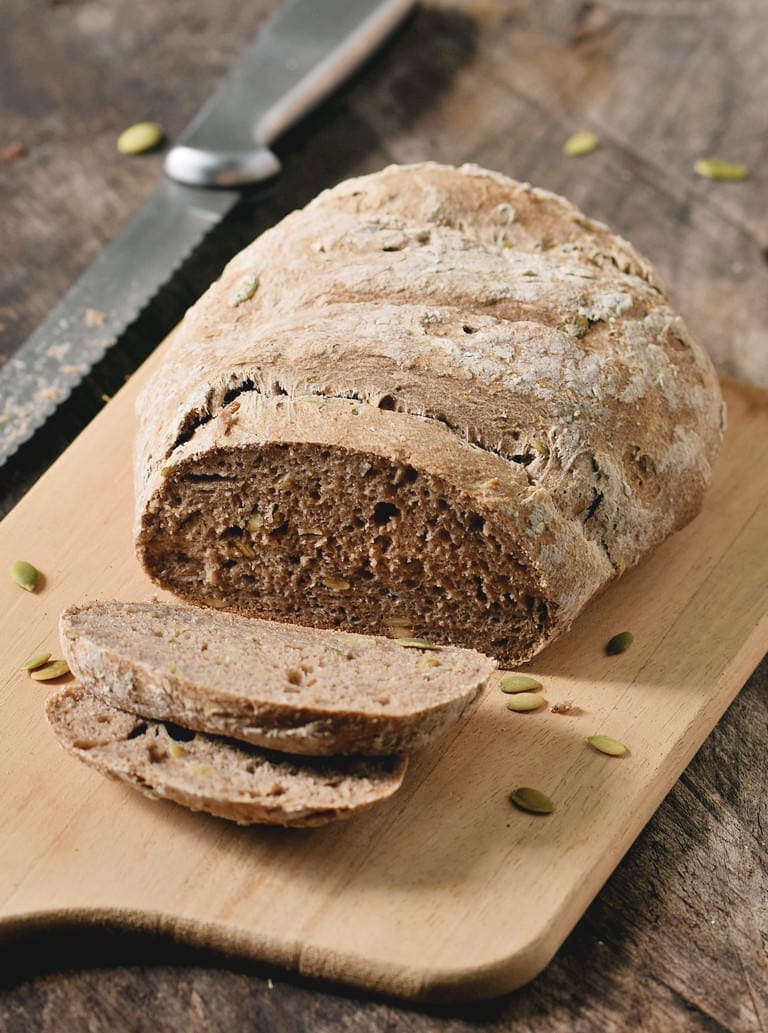
Recipe Notes & Substitutes
- Some readers replaced the buckwheat flour with oat flour or sorghum flour (or a combo) and the bread still turned out amazing.
- Rice flour works great in this bread recipe, but feel free to experiment with lentil flour, teff flour, sorghum flour, or quinoa flour.
- You can use arrowroot flour instead of tapioca flour/starch. Cornstarch or potato starch will most likely work as well.
- Chickpea flour is the same as garbanzo bean flour. It adds plant-based protein and I love adding it to bread. Some readers had success using oat flour instead.
- Psyllium husk powder is the most important ingredient in this recipe and cannot be subbed by any other ingredient. Make sure to use psyllium husk POWDER. If you have psyllium husk (not the powder), you can blend it in a blender or electric spice/coffee grinder until it’s a fine powder.
Can I Freeze Gluten-Free Bread?
You can definitely freeze this gluten-free bread! Slice it and wrap all individual slices in wax paper or parchment paper. Put in zip lock bags and freeze for up to 3 months. Let thaw at room temperature and then toast the bread once you want to serve it.
Other Gluten-Free Bread Recipes
You can serve the bread with stews, soups and all kinds of comfort meals. Make sure to also check out my other vegan and gluten-free bread recipes:
- Gluten-Free Baguette
- Gluten-Free Pita
- Gluten Free Naan
- Gluten Free Buns
- Chocolate Chip Banana Bread
- Pumpkin Bread
- Moist Vegan Cornbread
- Marbled Banana Bread
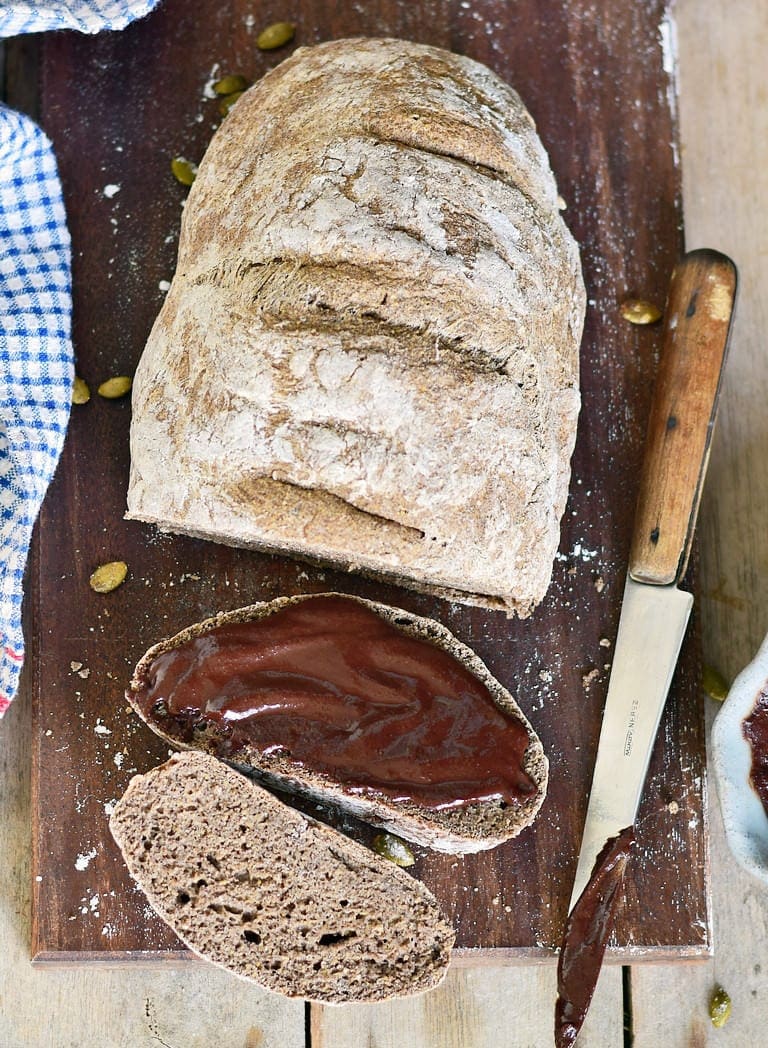
Should you give this gluten-free German bread recipe a try, please leave a comment and rating below and don’t forget to tag me in your Instagram or Facebook post with @elavegan and #elavegan because I love to see your remakes! 🙂
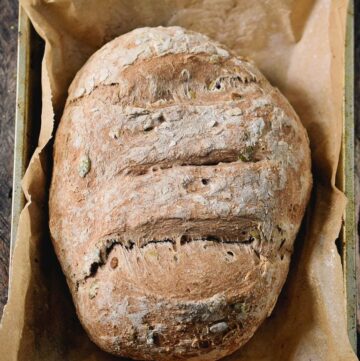
Gluten-Free Bread Recipe
Ingredients
Dry ingredients:
- 100 g (3/4 heaped cup) buckwheat flour (see notes)
- 100 g (2/3 cup) white rice flour
- 100 g (1 cup) chickpea flour
- 40 g (5 Tbsp) tapioca flour/starch (see notes)
- 1 tsp baking powder
- 1/2 tsp baking soda
- 3/4-1 tsp sea salt
- 50 g (3/8 cup) pumpkin seeds (optional - see notes)
Psyllium mixture:
- 450 ml (1.8 cup) water
- 30 g (3 Tbsp) psyllium husk powder (see notes)
Instructions
- I recommend using the metric measurements for this recipe (grams/ml). In a bowl, combine the water with the psyllium husk powder and whisk well. It will gel instantly and become thick. Set aside for 20-30 minutes.
- Meanwhile, measure/weigh all the dry ingredients and add them to a large bowl. Preheat the oven to 390 °F (200 °C).
- Add the psyllium gel to the bowl and knead the ingredients with a hand/ stand mixer (use a dough hook). You can also knead the dough with your hands. It will take about 5-10 minutes for the dough to come together.
- If the dough appears too wet, sprinkle it with 1-2 Tbsp tapioca flour. If it feels too dry, add a little water.
- Shape the dough into a round or rectangular loaf and place it on a baking sheet lined with parchment paper (I sprinkled the paper with a bit of tapioca flour).
- Bake for 50-60 minutes. Let the bread cool completely, then slice and enjoy. The bread freezes well, for up to 3 months!
Notes
Video Of The Recipe
- Psyllium husk powder is the most important ingredient in this recipe and cannot be substituted by any other ingredient. Make sure to use psyllium husk POWDER. If you have whole psyllium husk (not the powder), you can blend it in a blender or electric spice/coffee grinder until it's a fine powder.
- A few people mentioned a weird smell in the bread (I didn't, and most other people didn't either), however, I received a few helpful comments.
- You can use whole-grain buckwheat flour or regular, both are fine. Some people replaced the buckwheat flour with oat flour or sorghum flour (or a combo) and the bread still turned out amazing.
- Rice flour works great in this bread recipe, but feel free to experiment with lentil flour, teff flour, sorghum flour, or quinoa flour.
- You can use arrowroot flour instead of tapioca flour/starch. Cornstarch or potato starch will most likely work as well.
- Chickpea flour is the same as garbanzo bean flour. It adds plant-based protein and I love adding it to bread. Some readers had success using oat flour instead.
- Please don't compare this bread with wheat bread which contains gluten and yeast or a gluten-free bread which was made with eggs and yeast. It's hard to make a gluten-free, yeast-free, vegan bread, but this is the best recipe I have tried so far, and it turns out amazing every time! Depending on the flour mixture, the bread might end up more fluffy or dense.
- Pumpkin seeds: You can use sunflower seeds instead, however, they will turn green due to a chemical reaction with the baking soda/powder. This is perfectly fine and shouldn't concern you.
Nutrition information is an estimate and has been calculated automatically
Equipment
If you are using Pinterest, feel free to pin the following photo:
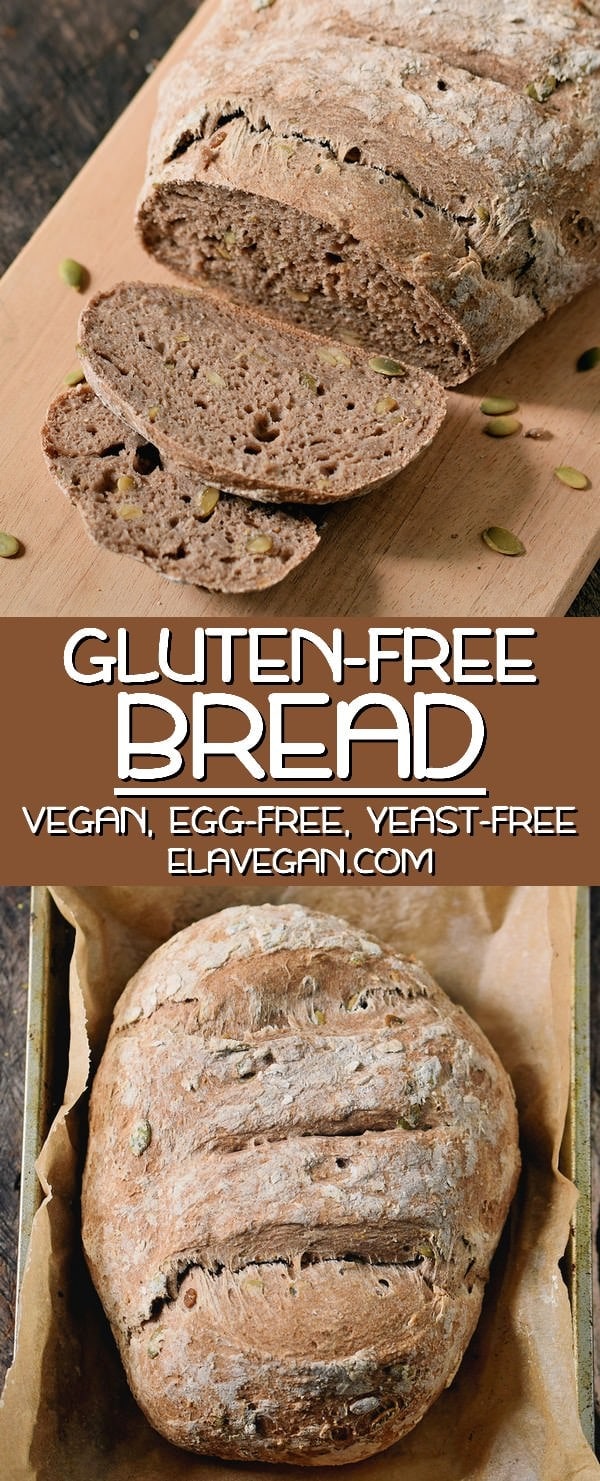
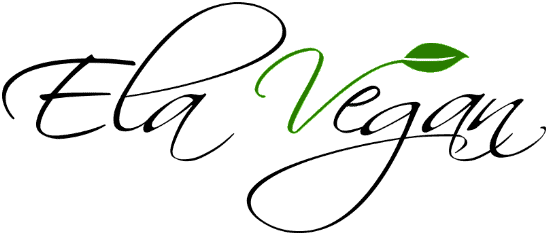
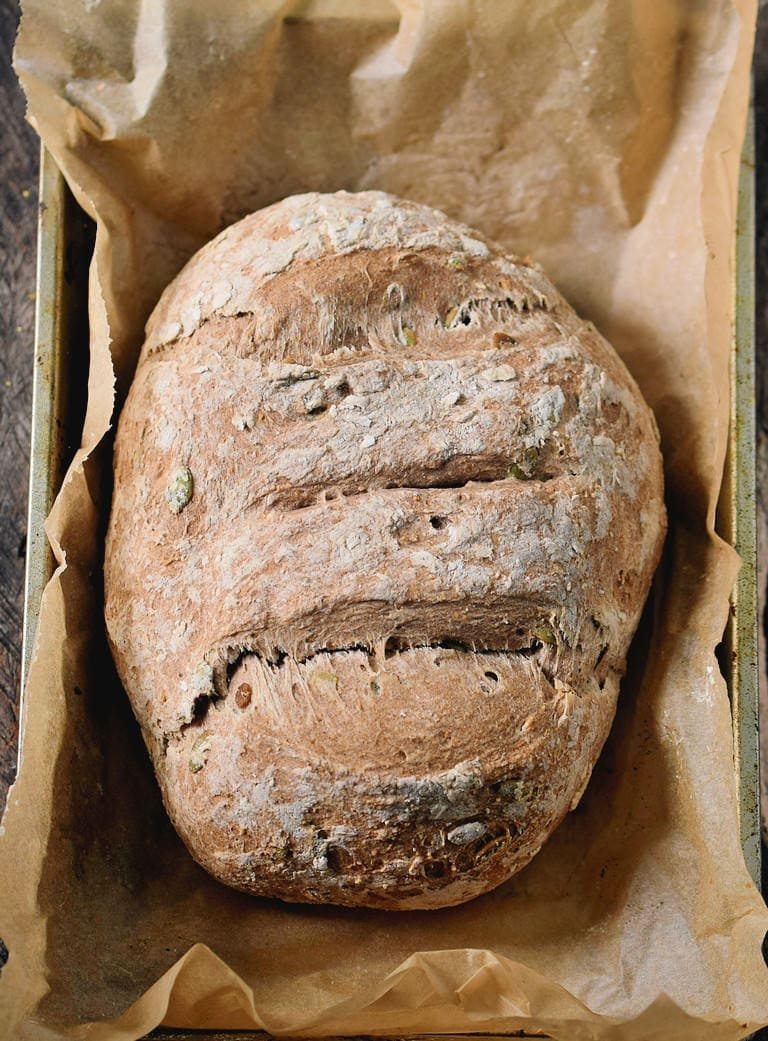
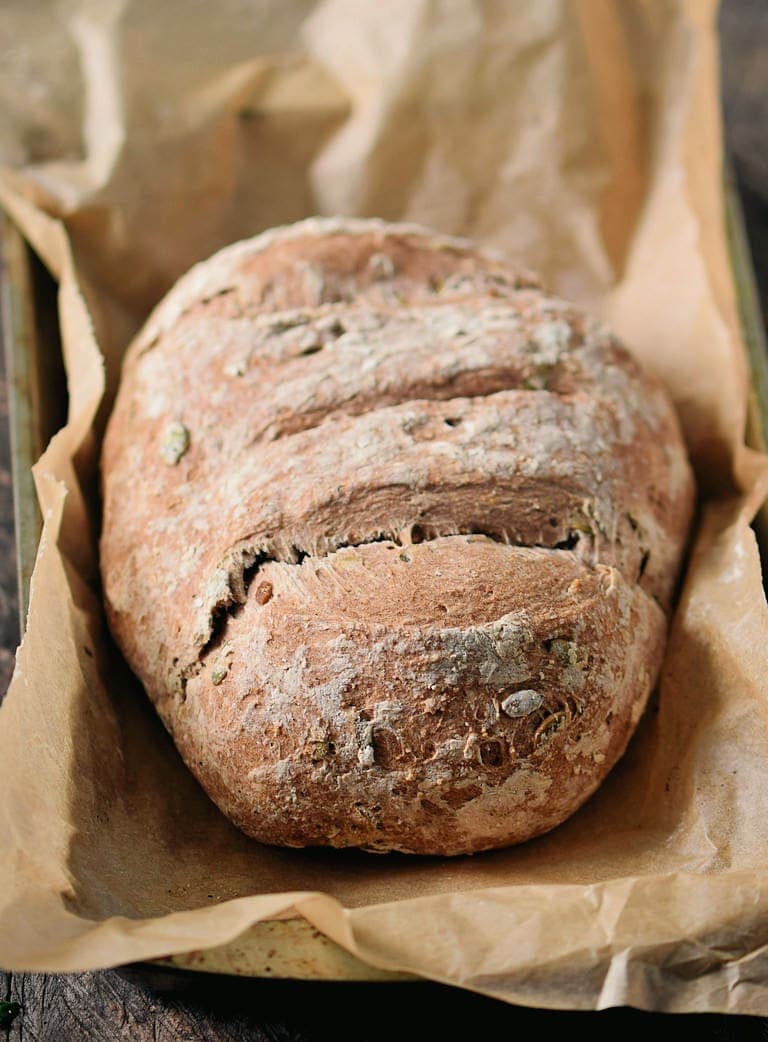
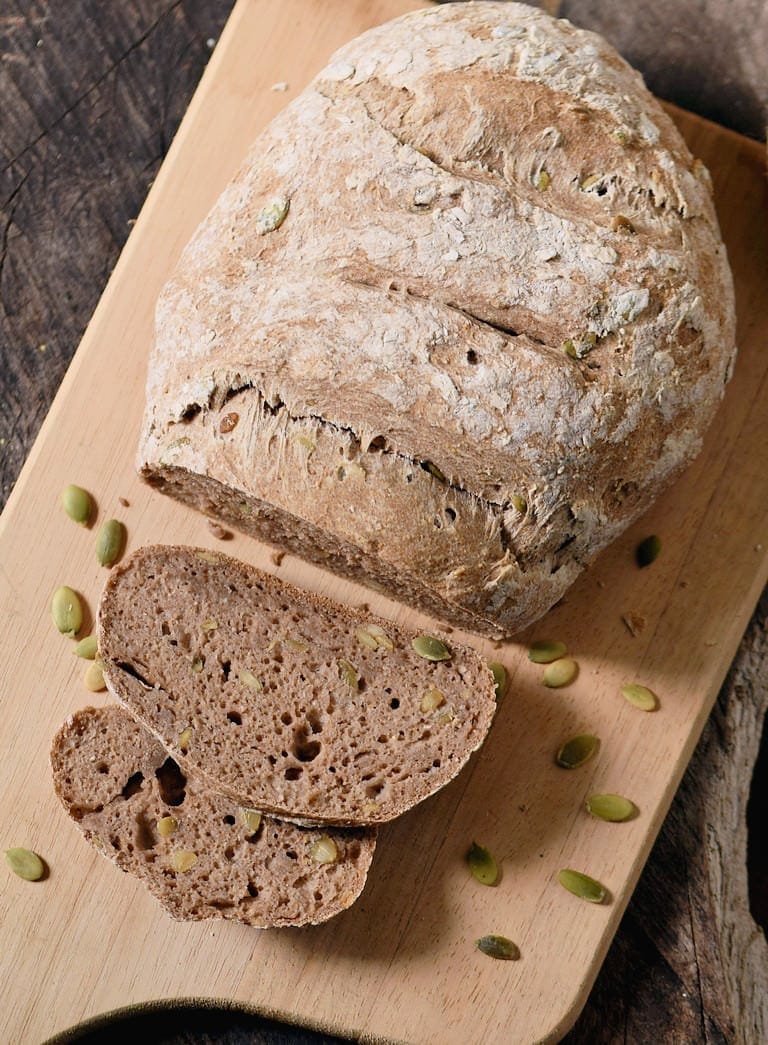
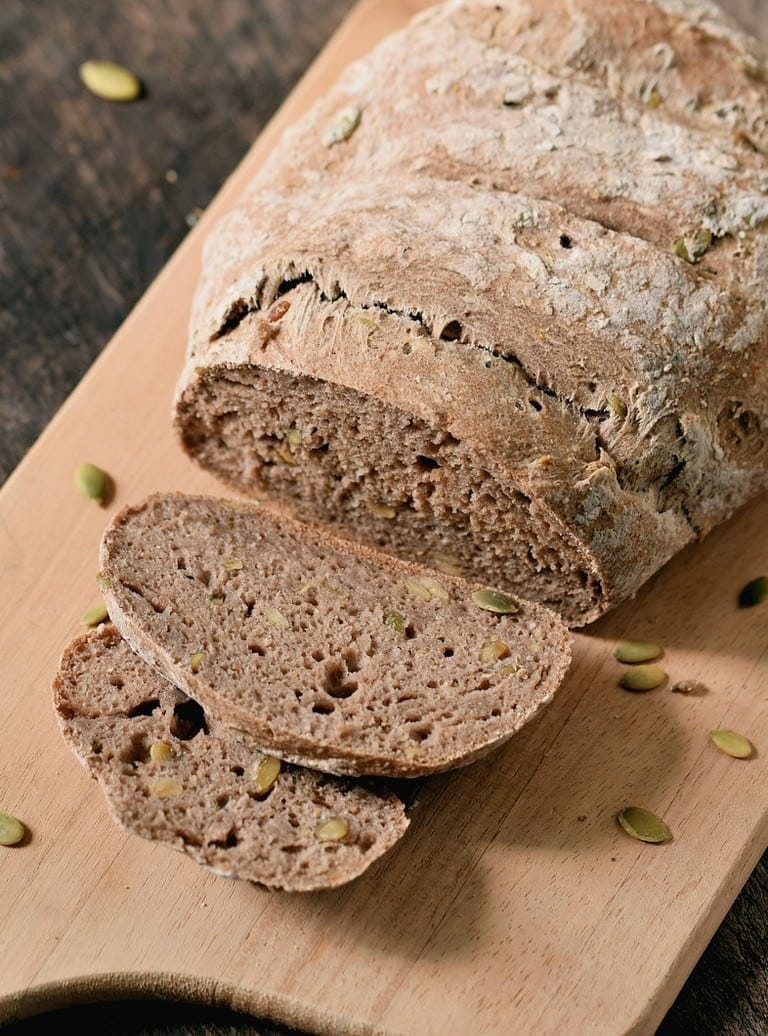
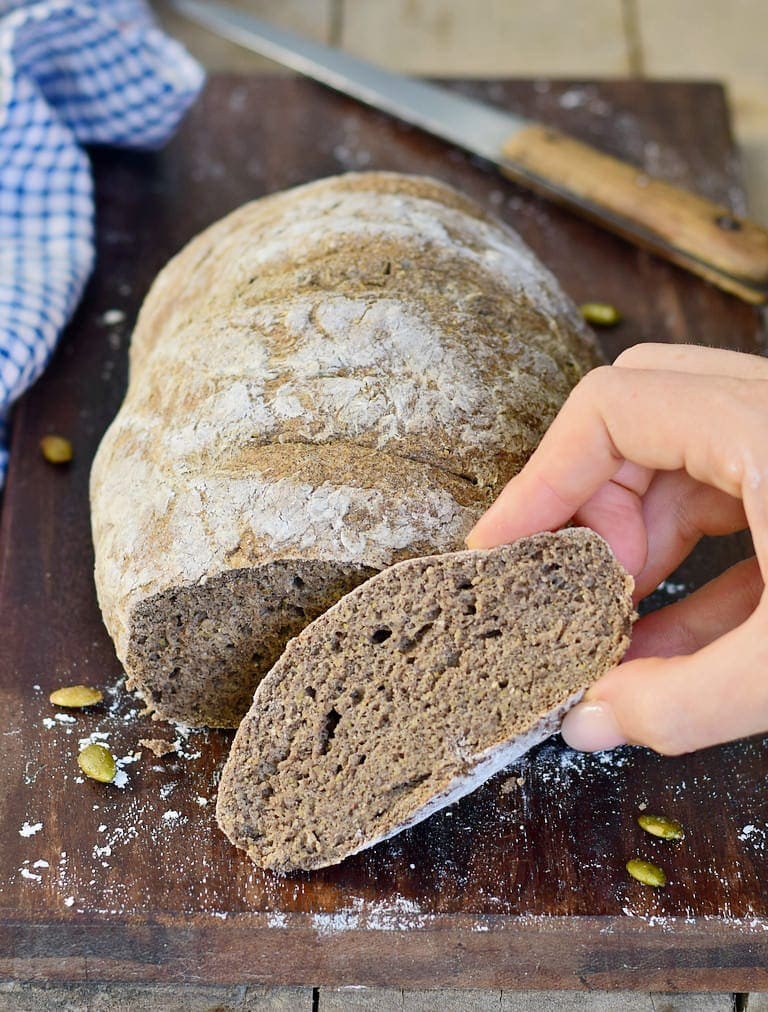
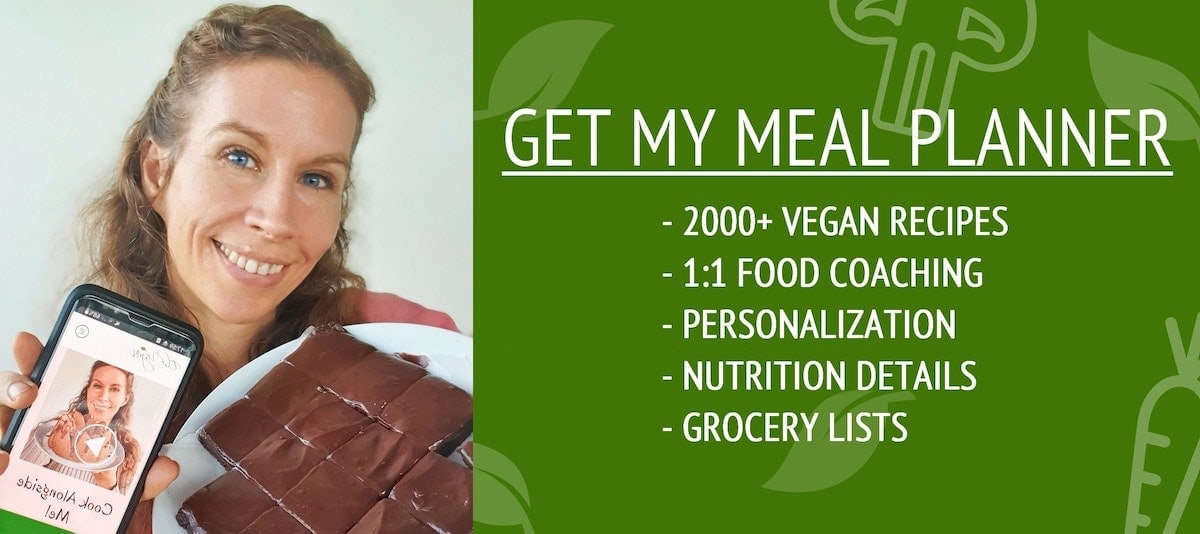
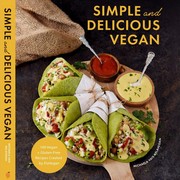
Hi Ela, I tried your bread yesterday and it turned out amazing first try. Such depth of flavour. Had it for breakfast with oyster mushrooms. Thanks so much. Do you think I can try this in the bread machine? I have a rye bread setting.
Hi Atiya, I am so glad it turned out great. Yes, that should work, as some people already commented that they tried it. 🙂
Hi Ela, wow thanks for this great recipe. I followed your instructions and got a beautiful and good tasting bread. Too bad I could not attach a picture to this comment otherwise I would show you the result. The funky smell that I read about in the other comments also occured in my first attempt. The smell was very familiar to me.. it was the chick pea flower. So today, I substituted the chick pea with some other gluten free mix and the smell was gone. Thanks again.
So happy you like it! You can share the photo on Instagram or Pinterest and tag me. 🙂
How can this recipe be gluten free if you use buckwheat?. Buckwheat isn’t gluten free.
Buckwheat IS gluten-free. Just because it has “wheat” in the name, doesn’t mean it contains wheat. Please do your research. 🙂
Wow! So glad I tried this the 2nd time. First time was a disaster — too gummy to cut, and too heavy to eat, but on the first try I used US measurements and only kneaded by hand until the dough formed. The second time I followed the original recipe instructions carefully, used the kitchen scale for my measurements. (I bought the Ozeri ZK24 Garden & Kitchen Scale for under $10 on Amazon — easy to use and very accurate, and I learned that flours and psylliium husk powder can vary greatly when you use weight measurements rather than cups and spoon measurements!) My only substitution was quinoa flour instead of chickpea, as I can’t have garbanzo beans. Instead of kneading superificially by hand, I used a stand mixer with a dough hook to knead the mixture for almost 10 minutes. After about 52 minutes at 350 F, I used a digital food thermometer to test the bread for doneness and pulled it once it reached 200 degrees Fahrenheit. I believe it is also important to follow the instruction to completely cool the bread before slicing. (I refrigerated it overnight.) The rave reviews are what made me try it again, and they are RIGHT – a fabulous recipe! After trying 7 commercial loaves and 9 other recipes to try to find a good-tasting gluten-free bread with no eggs and no yeast, I have finally found one worth keeping, Great job, Ela!
Wow, that’s such an amazing and thorough feedback, Beatrice! Thank you very much! I am so glad you tried it again with success. 🙂
Hi Ela,
Thank you so much for this great recipe. Mine turned out great, the only thing is that I had a sand-crunchy feel when I am chewing it. Do you know what that could be?
Could it be psyllium husk?
Thank you in advance.
Hi Jelena, I am glad it turned out great. Unfortunately, I am not sure what that could be. 🙂
Hi! I’d like to try this recipe but have no dough hooks. Do you think it will work just with kneading if I blend ingredients together enough to start a ball? I also have an amazing bread machine that does a beautiful job on bread, including kneading. Could that also work without mixing first with a hand blender with dough hooks? (I have a lot of arthritis in my fingers.)
Thanks, Liz
Hello Liz, both should work. There were some comments from people who used a bread machine, and it worked fine. 🙂
Hi, ‘Ela,
I have made this multiple times both with sunflower seeds and pumpkin seeds. I make it a lot for coworkers. When I first started making it I put out a feedback form for everybody who tried it. I would say about 10 to 15% tasted that musty smell. Now I just routinely put in 1/2 tsp citric acid acid when I make it. Personally I think it’s the book wheat flour that gives it that musty smell. I have looked at some other feedback and I think I may experiment with different flowers to replace the buckwheat. Thanks for all of your lovely recipes!
Thanks so much for your great feedback. 🙂
Thank you so much for this recipe. The bread turned out very nice and delicious. I even replaced the chickpea flour with corn flour and it still worked. Thank you!
That’s awesome, Gergana. Thanks for your great feedback. 🙂
Better than any store bought gluten free bread and best gf bread recipe I have tried so far. Going to double the quantity next time as the loaf is small and I want to eat it with everything! Thank you!
I am so glad to hear that, Sophie! Thanks so much for your amazing feedback. 🙂
HI! Was wondering how long it will last (not in fridge).
Thank you!
xxxxx
Hey Natalie, I would say up to 3 days should be fine. 🙂
I was really excited to try this recipe but it’s been a bit of a failure and I’m hoping you can help me figure out why. After I combined the wet and dry ingredients it was so sticky I couldn’t mold it, I kneaded it for over 10 minutes and added some extra flour but the issue never resolved, I’m very confused, the consistency was completely different to yours in the video. It also didn’t rise very much at all and split when cooking… Do you have any tips for me? Thanks 🙂
Hello Carla, did you use the psyllium husk POWDER or whole psyllium? Because that could be the only reason I can think of why it was wet and didn’t rise.
The psyllium powder not only acts as a binder (and soaks up most of the liquid) but also acts similar to gluten and makes the bread rise! 🙂
I followed the recipe, but mine never cooked? I left if for 60mins at 350, but it was not done. I left it another 60, and it looked and sounded done, with a nice crust and everything. So I placed it outside to cool, and when I cut a slice, it was all sticky and raw in the middle. Please help!
Hi Amy, that’s really weird. Was the dough too wet, maybe? Did you use psyllium husk powder, or did you change the recipe (different flours)?
I made it following all of the instructions and it was perfect. The psyllium husk powder was quite thick but I just worked it in and added a tiny bit of water which I’m not sure I really needed. I replaced the tapioca with cornflour as I figured they’re both starches. Thank you for the recipe.
You are very welcome, Lizzi! So glad it turned out perfect. 🙂
Hello 🙂
Ohhh I love this recipe. However, it took me a few times until I achieved a result I was happy with. The temperature in this recipe just don’t work for my oven 🙁 . I switched to my bread machine and it bakes perfectly.
I also just use 150g chickpea flour and 150g rice flour instead of buckwheat flour. I do want to add I am german myself (living in Australia hence baking my own bread) and love / prefer darker bread but enjoy more the taste and consistency with only the two flours mentioned above. I really wanted to love Buckwheat and Sorghum flour but I just don’t 🙁 I also mixed all dry ingredients together and the add water and on top some apple vinegar. I did not reduce the amount of water..
It’s a great recipe you can play around with and adjust to your liking and preferences.
Thank you ????
Hello Frederieke! Thanks for your great feedback, I am happy you were able to tweak the recipe to your liking. 🙂
Can you please share the settings you use on the bread machine. I’m new at this and some guidance would be great. Thank you.
Hi, I have a small oven, may I know how to adjust the timing for a half loaf? Any need to adjust the temperature? Thanks!
Hi Jamie, the loaf is quite small, I often make it in my mini toaster oven, so no need to make just a half loaf. 🙂
Can I bake it in a loaf pan?
Yes, you can. 🙂
And still, bake it at the same temperature and same time?
Same temperature, yes, probably a little shorter (I never tried halving the recipe).
Hi,
I tried making the bread, but unfortunately mine came out very hard. When I mixed psylium husk with water it came out too thick and it was not of pourable consistancy. I used psylium husk powder only, I could not mix it so I ended up adding more water than in the recipe. Please let me know where I went wrong. Apart from this, all other recipes were big hit in my family, Thank you.
Hi Nisha, I am not sure why this happened. Did you measure the ingredients in grams? It sounds like you used too much psyllium?
Thank you so much for this great recipe for Gluten-free Bread. I made it for the first time today and it was an absolute success, came out perfectly, just as you described it. I couldn’t wait for it to cool down so that I could slice into the loaf. This will definitely be my go-to recipe! Thanks again 🙂
You are very welcome, Melanie! I am so glad you like it. 🙂
This bread is amazing. I used oat flour in place of the chickpea flour and added 1 tbs of apple cider vinegar (just in case of the smell people keep mentioning). Fabulous! I am so grateful to have found you. Every recipe I’ve tried has been very good. Thank you so much!
Aww, thanks for the compliment, Gerry. I am so glad you enjoyed this bread and other recipes you tried from my site. 🙂
We had a funky smell from ours too. So next time I’ll try the tips listed here. For a GF and vegan bread this was pretty good. Amazing texture. My kids weren’t fans of the color of the bread. Once we put vegan butter and honey (I know it isn’t vegan, but I’m not) on it, it was good!
Glad you liked it, Kim. 🙂